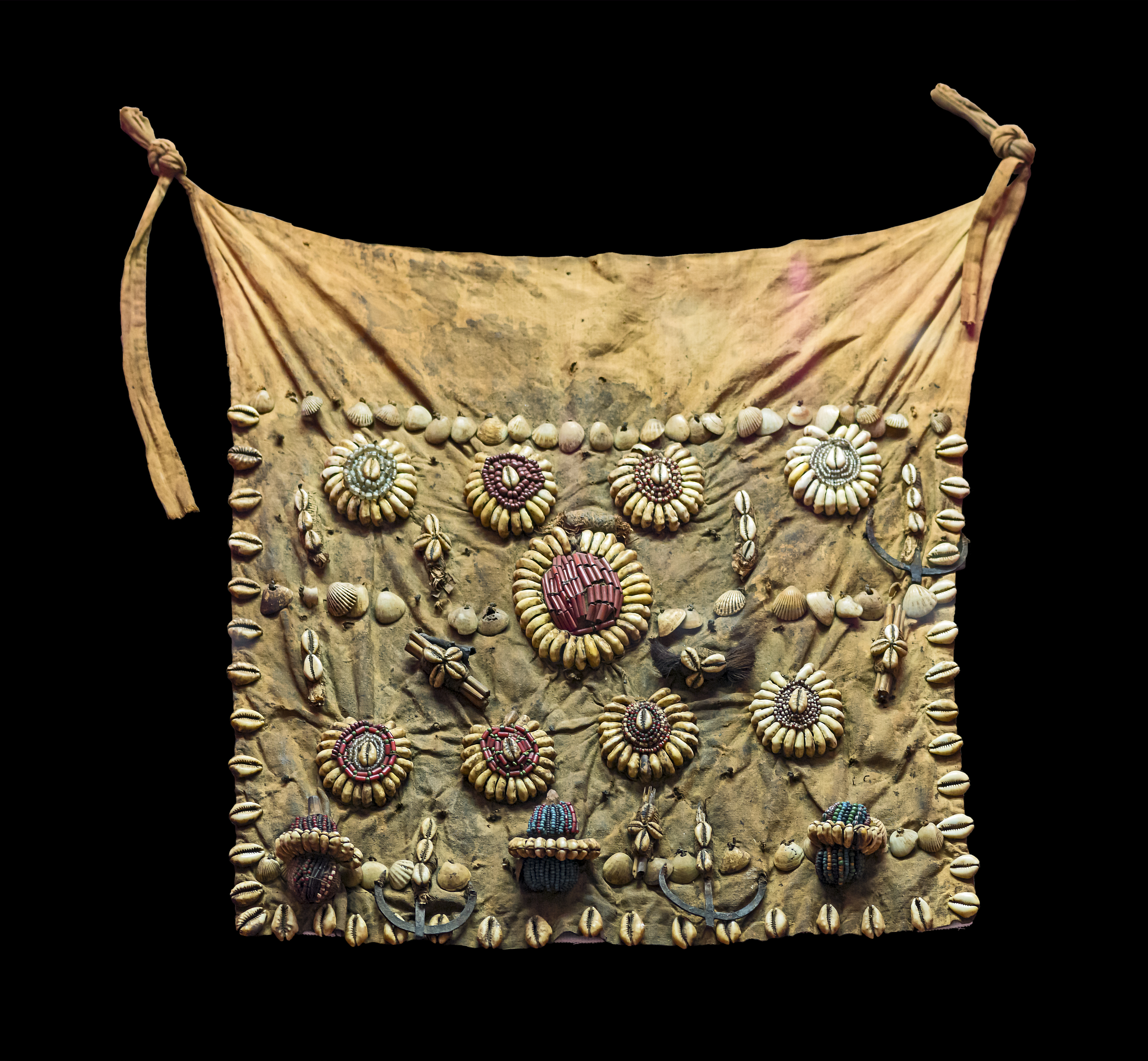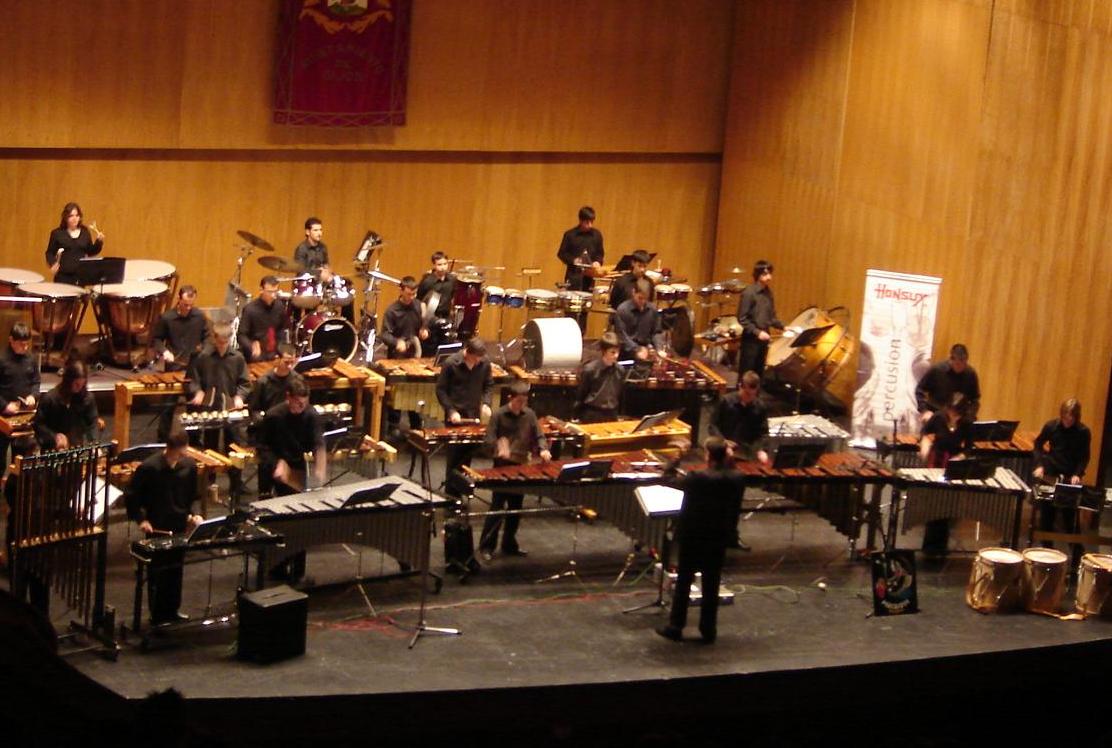|
Agbekor
Agbekor (agbekɔ) is a type of music and a style of dance by the West African peoples of Ewe and Fon. It is an ancient dance once known as Atamga, Ga meaning 'great', Atam meaning 'oath'. It is now performed by the people of Dzogadze, a farming community near Akatsi in the Southern part of the Volta Region of Ghana. It is characterized by multiple percussion instruments that engage in highly polyrhythmic interactions. Today, it is used for cultural presentations, but in the past, it was an actual war dance, and the oath in question was an oath taken by the ancestors before going into battle. The lead drummer 'calls' the dancers to perform a specific movement, preceded and followed by "the call to turn." There is a slow section and a fast section, with 'interlude songs' or "hatsiatsia" songs" sometimes performed in between. References * Arom, S. (1991). African polyphony and polyrhythm (Cambridge University Press, Cambridge). See also *African dance *Ewe drumming Ewe drumm ... [...More Info...] [...Related Items...] OR: [Wikipedia] [Google] [Baidu] |
African Dance
African dance refers to the various dance styles of Sub-Saharan Africa. These dances are closely connected with the traditional rhythms and music traditions of the region. Music and dancing is an integral part of many traditional African societies. Songs and dances facilitate teaching and promoting social values, celebrating special events and major life milestones, performing oral history and other recitations, and spiritual experiences. African dance utilizes the concepts of polyrhythm and total body articulation. African dances are a collective activity performed in large groups, with significant interaction between dancers and onlookers in the majority of styles. History Characteristics Traditional dance in Africa occurs collectively, expressing the values and desires of the community more than that of individuals or couples. Although dances may appear spontaneous, they are usually strictly choreographed. Improvisation is limited as it places the focus on the individua ... [...More Info...] [...Related Items...] OR: [Wikipedia] [Google] [Baidu] |
Ewe People
The Ewe people (; ee, Eʋeawó, lit. "Ewe people"; or ''Mono Kple Volta Tɔ́sisiwo Dome'', lit. "Ewe nation","Eʋenyigba" Eweland;) are a Gbe-speaking ethnic group. The largest population of Ewe people is in Ghana (6.0 million), and the second largest population is in Togo (3.1 million). They speak the Ewe language ( ee, Eʋegbe) which belongs to the Gbe family of languages. They are related to other speakers of Gbe languages such as the Fon people, Fon, Gen language, Gen, Phla Phera, Gun, Maxi, and the Aja people of Togo, Benin and southwestern Nigeria. Demographics Ewe people are located primarily in the coastal regions of West Africa: in the region south and east of the Volta River to around the Mono River at the border of Togo and Benin; and in the southwestern part of Nigeria (close to the Atlantic Ocean, stretching from the Nigeria and Benin border to Epe). They are primarily found in the Volta Region in southeastern Ghana, southern Togo, in the southwestern part of Be ... [...More Info...] [...Related Items...] OR: [Wikipedia] [Google] [Baidu] |
Dance
Dance is a performing art form consisting of sequences of movement, either improvised or purposefully selected. This movement has aesthetic and often symbolic value. Dance can be categorized and described by its choreography, by its repertoire of movements, or by its historical period or place of origin. An important distinction is to be drawn between the contexts of theatrical and participatory dance, although these two categories are not always completely separate; both may have special functions, whether social, ceremonial, competitive, erotic, martial, or sacred/liturgical. Other forms of human movement are sometimes said to have a dance-like quality, including martial arts, gymnastics, cheerleading, figure skating, synchronized swimming, marching bands, and many other forms of athletics. There are many professional athletes like, professional football players and soccer players, who take dance classes to help with their skills. To be more specific professional athlet ... [...More Info...] [...Related Items...] OR: [Wikipedia] [Google] [Baidu] |
West Africa
West Africa or Western Africa is the westernmost region of Africa. The United Nations defines Western Africa as the 16 countries of Benin, Burkina Faso, Cape Verde, The Gambia, Ghana, Guinea, Guinea-Bissau, Ivory Coast, Liberia, Mali, Mauritania, Niger, Nigeria, Senegal, Sierra Leone, and Togo, as well as Saint Helena, Ascension and Tristan da Cunha ( United Kingdom Overseas Territory).Paul R. Masson, Catherine Anne Pattillo, "Monetary union in West Africa (ECOWAS): is it desirable and how could it be achieved?" (Introduction). International Monetary Fund, 2001. The population of West Africa is estimated at about million people as of , and at 381,981,000 as of 2017, of which 189,672,000 are female and 192,309,000 male. The region is demographically and economically one of the fastest growing on the African continent. Early history in West Africa included a number of prominent regional powers that dominated different parts of both the coastal and internal trade networks, suc ... [...More Info...] [...Related Items...] OR: [Wikipedia] [Google] [Baidu] |
Fon People
The Fon people, also called Fon nu, Agadja or Dahomey, are a Gbe ethnic group.Fon people Encyclopædia Britannica, undated, 1.7 million population, Retrieved June 29, 2019 They are the largest ethnic group in found particularly in its south region; they are also found in southwest and . Their total population is estimated to be about 3,500,000 people, and they speak the |
Percussion
A percussion instrument is a musical instrument that is sounded by being struck or scraped by a beater including attached or enclosed beaters or rattles struck, scraped or rubbed by hand or struck against another similar instrument. Excluding zoomusicological instruments and the human voice, the percussion family is believed to include the oldest musical instruments.''The Oxford Companion to Music'', 10th edition, p.775, In spite of being a very common term to designate instruments, and to relate them to their players, the percussionists, percussion is not a systematic classificatory category of instruments, as described by the scientific field of organology. It is shown below that percussion instruments may belong to the organological classes of ideophone, membranophone, aerophone and cordophone. The percussion section of an orchestra most commonly contains instruments such as the timpani, snare drum, bass drum, tambourine, belonging to the membranophones, and cy ... [...More Info...] [...Related Items...] OR: [Wikipedia] [Google] [Baidu] |
Polyrhythmic
Polyrhythm is the simultaneous use of two or more rhythms that are not readily perceived as deriving from one another, or as simple manifestations of the same meter. The rhythmic layers may be the basis of an entire piece of music (cross-rhythm), or a momentary section. Polyrhythms can be distinguished from irrational rhythms, which can occur within the context of a single Part (music), part; polyrhythms require at least two rhythms to be played concurrently, one of which is typically an irrational rhythm. Concurrently in this context means within the same rhythmic cycle. The underlying pulse, whether explicit or implicit can be considered one of the concurrent rhythms. For example, the Clave (rhythm)#Son clave, son clave is poly-rhythmic because its 3 section suggests a different meter from the pulse of the entire pattern. In western art music In some European art music, polyrhythm periodically contradicts the prevailing meter. For example, in Wolfgang Amadeus Mozart, Mozart ... [...More Info...] [...Related Items...] OR: [Wikipedia] [Google] [Baidu] |
Ewe Drumming
Ewe drumming refers to the drumming ensembles of the Ewe people of Ghana, Togo, and Benin. The Ewe are known for their experience in drumming throughout West Africa. The sophisticated cross rhythms and polyrhythms in Ewe drumming are similar to those in Afro-Caribbean music and late jazz. The original purpose of Ewe drumming were sung or performed by warriors. Now the songs and performed to celebrate or for recreational use. For example, Agbadza was originally used as a warrior dance but is now used to celebrate events. Variation Ewe drumming is very diverse and is played in many slightly different ways. For example, an Ewe musician from Togo may play a piece or instrument slightly differently from the way a Ewe from Ghana does. The Fon people of Benin are another example of this variation. They construct their villages, towns, and cities on water, and because of this, they do not play the same upright drums other Ewe play. Instead, they place large gourds on water as drums. Inst ... [...More Info...] [...Related Items...] OR: [Wikipedia] [Google] [Baidu] |
Percussion Ensembles
A percussion ensemble is a musical ensemble consisting of only percussion instruments. Although the term can be used to describe any such group, it commonly refers to groups of classically trained percussionists performing primarily classical music. In America, percussion ensembles are most commonly found at conservatories, though some professional groups, such as Nexus and So Percussion exist. Drumlines and groups who regularly meet for drum circles are two other forms of the percussion ensemble. Early literature George Antheil's ''Ballet Mécanique'' (1923) is one of the earliest examples of composition for percussion, written originally as a film score and exemplifying the ideals of the Italian futurist movement. Antheil originally called for sixteen synchronized player pianos, as well as airplane engines, alongside more traditional percussion instruments. Another early example, Cuban composer Amadeo Roldán's ''Rítmicas'' nos. 5 and 6 of 1930, made use of Cuban percussi ... [...More Info...] [...Related Items...] OR: [Wikipedia] [Google] [Baidu] |
Ghanaian Music
There are many styles of traditional and modern music of Ghana, due to Ghana's worldwide geographic position on the African continent. The best known modern genre originating in Ghana is Highlife. So many years, Highlife was the preferred music genre until the introduction of Hiplife and many others. Traditional music The traditional musicology of Ghana may be divided geographically between the open and vast savanna country of northern Ghana inhabited by Ghanaians of Gur and Mande speaking groups; and the fertile, forested southern coastal areas, inhabited by Ghanaians speaking Kwa languages such as Akan. *The northern musical traditions belong to the wider Sahelian musical traditions. It features a mix of melodic composition on stringed instruments such as the ''kologo'' lute and the '' gonjey'' fiddle, wind instruments such as flutes and horns, and voice; with polyrhythms clapped or played on the talking drum, gourd drums or ''brekete'' bass drums. The tradition of gyil m ... [...More Info...] [...Related Items...] OR: [Wikipedia] [Google] [Baidu] |







